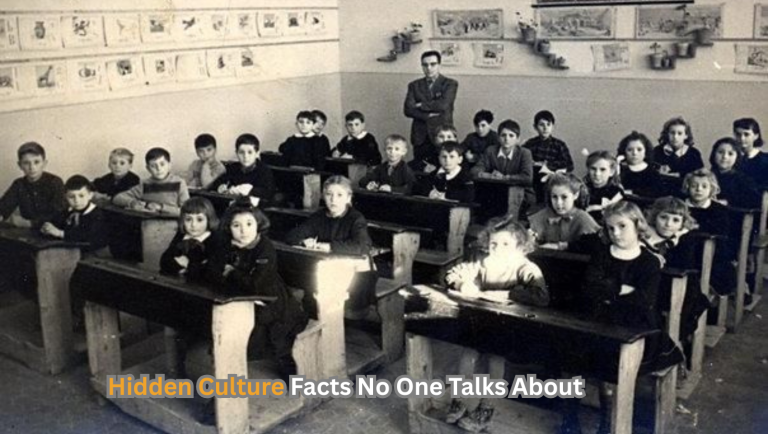At omanreport we dive deep into the fascinating world of culture, uncovering stories and facts that often go unnoticed. From ancient traditions to modern-day practices, there’s a hidden side to every society that rarely makes headlines. Understanding these secrets not only enriches our knowledge but also opens our eyes to the beauty, complexity, and sometimes the peculiarities of human life. Today, we explore hidden culture facts that no one talks about—stories that will surprise, intrigue, and inspire you.
The Mystery of Forgotten Traditions
How Ancient Rituals Shaped Modern Life
Many of today’s cultural practices have roots in rituals that date back centuries. For instance, in certain regions of Peru, ancient agricultural ceremonies were performed to ensure bountiful harvests. These rituals involved offerings to the gods of earth and water, some of which still influence local festivals today. What may seem like simple celebrations often carry profound historical significance.
The Disappearing Languages
Across the globe, languages are disappearing at an alarming rate. UNESCO estimates that nearly half of the world’s 7,000 languages could vanish in the next century. Each language carries unique expressions, idioms, and ways of understanding the world. For example, some indigenous tribes have words for emotions that cannot be directly translated into English, revealing how deeply language shapes perception.
Cultural Norms You Didn’t Know Existed
Odd Customs Around the World
Every culture has its quirks. In some countries, it is considered polite to burp after a meal as a compliment to the chef. In others, specific hand gestures can convey completely different meanings, sometimes humorous, sometimes offensive. These small yet profound differences highlight how culture influences daily life in ways we often overlook.
Festivals That Defy Logic
Festivals can range from deeply spiritual ceremonies to seemingly bizarre spectacles. Take La Tomatina in Spain, where thousands gather annually to throw tomatoes at one another. Or the baby jumping festival in Spain, where priests bless babies by having men leap over them. While these events may appear strange to outsiders, they carry rich symbolic meaning for the communities that celebrate them.
Hidden Arts and Expressions
Lost Art Forms
Many artistic traditions have faded over time, leaving behind traces that only specialists or local communities remember. For example, traditional weaving techniques in South America often tell stories of ancient civilizations, yet very few people know their significance. Similarly, ancient pottery designs reveal societal hierarchies and cultural values, acting as silent storytellers from the past.
Music Beyond the Mainstream
Not all music receives global recognition, yet it plays a vital role in cultural identity. In Indonesia, the gamelan orchestra is more than music; it is a ritual, a storytelling tool, and a way of preserving collective memory. By exploring these musical traditions, we can appreciate how sound shapes identity and community in subtle, yet profound ways.
Hidden Food Practices
Ancient Recipes Still Alive
Many cultures maintain culinary practices that have survived for centuries. Fermented foods, for example, are prevalent in Korea, Ethiopia, and Japan. Beyond taste, fermentation reflects local knowledge of health, preservation, and even spirituality. Some dishes, prepared exactly as they were hundreds of years ago, serve as edible windows into the past.
Foods With Ritual Significance
Food often carries meaning beyond nutrition. In India, certain meals are prepared only for religious ceremonies, while in Mexico, specific foods are tied to Day of the Dead celebrations. Understanding these connections adds layers to how we perceive everyday meals and their cultural importance.
Cultural Etiquette You Might Break Without Knowing
Greetings Across the Globe
A handshake in one country may be polite, but in another, a bow or cheek kiss might be expected. Misunderstanding these nuances can lead to social faux pas, yet they are often unspoken rules that reveal deeper societal values. For instance, in Japan, bowing conveys respect and humility, while in other cultures, eye contact holds the same weight.
Dress Codes and Hidden Meanings
Clothing can signify much more than fashion. Certain colors, patterns, or garments are reserved for special occasions or social ranks. Wearing them incorrectly may unintentionally convey disrespect. Exploring these subtle signals allows travelers and observers to engage with cultures more respectfully and meaningfully.
FAQS
What is the most surprising cultural fact you’ve found?
One of the most surprising discoveries is that some communities in the Amazon believe that certain plants can communicate with spirits. These beliefs guide their daily activities, medicine, and rituals, showing how spiritual and natural worlds intertwine.
How can I learn about hidden cultural practices safely?
Start by reading scholarly articles, visiting museums, or connecting with local guides. Respectful engagement and asking questions without judgment is key. Participating in workshops or festivals is another immersive way to experience culture firsthand.
Are hidden cultures disappearing quickly?
Yes, globalization and modernization put many traditions at risk. Language loss, urban migration, and Western influence contribute to the decline of cultural practices. Supporting local communities and cultural preservation projects can help sustain these traditions.
Can everyday people understand these hidden cultures?
Absolutely. While some customs may be complex, exposure through travel, media, and literature can deepen understanding. Curiosity, open-mindedness, and respect are the bridges to grasping cultural intricacies.
How do hidden cultures influence modern society?
Many modern practices, from holidays to cuisine to artistic trends, originate in older, often overlooked cultural traditions. Understanding these roots offers context for contemporary life and enriches our appreciation for diversity.
Conclusion
Hidden cultural facts remind us that the world is far richer and more complex than it appears. From forgotten rituals and fading languages to unique customs, food practices, and artistic expressions, each element of culture holds a story worth exploring. At perujournal.com, we believe uncovering these hidden truths not only educates but also inspires respect, curiosity, and wonder for the incredible diversity of human life. By paying attention to what often goes unnoticed, we can connect more deeply with our shared past and present, and appreciate the subtle threads that weave the tapestry of culture around the world.


